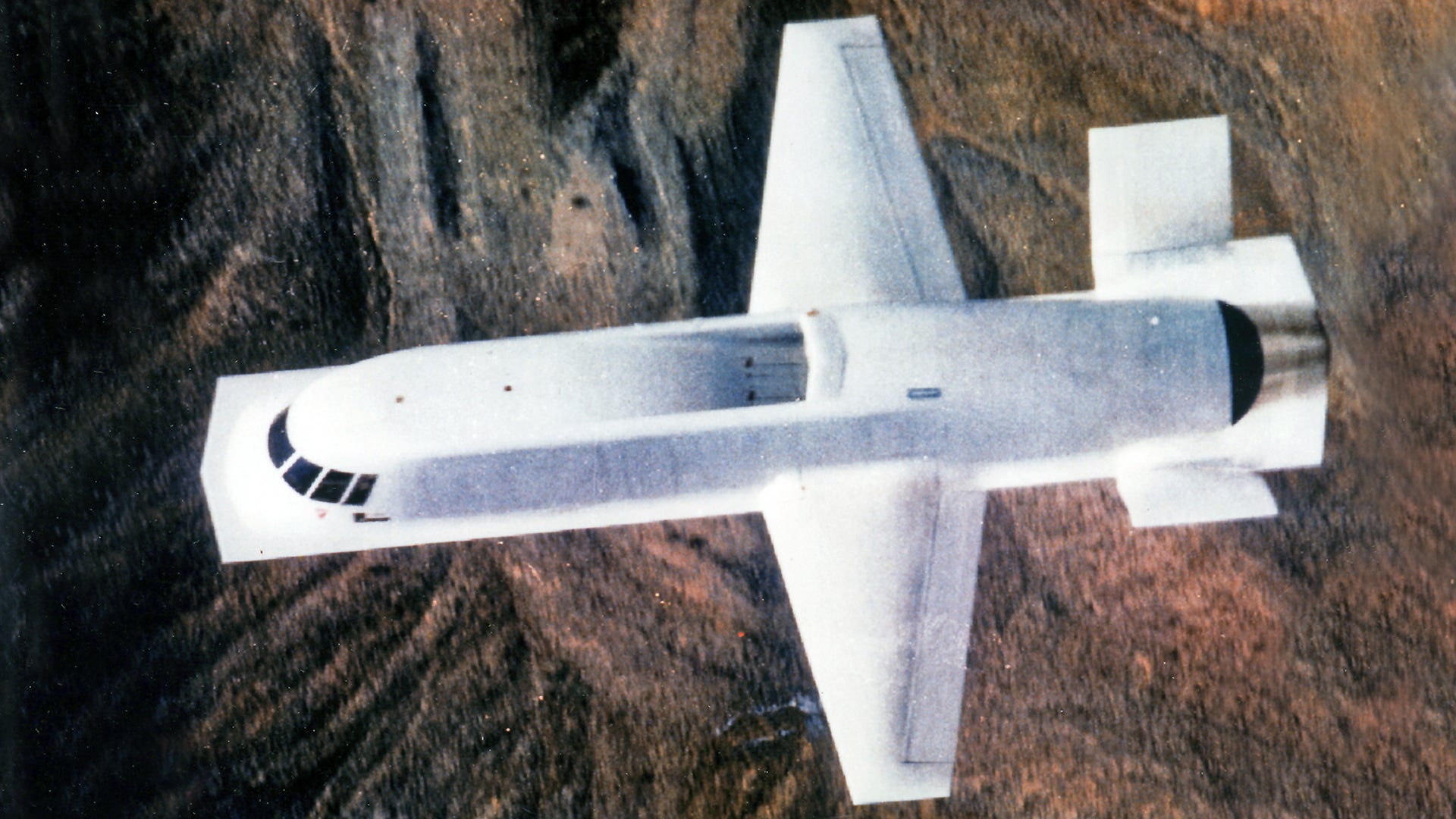In the late 1970s, the Pentagon saw a need for a new class of battlefield surveillance aircraft that could penetrate into denied airspace and collect intelligence in real-time for long periods by using a new technology that was beginning to emerge known as stealth. With this in mind, the U.S. Air Force and the Defense Advanced Research Projects Agency approached the Northrop Corporation, which had some experience with stealth technology already, to build a reconnaissance aircraft built around an advanced radar system. The resulting prototype aircraft was known as Tacit Blue, now regarded by the Air Force as one of the most successful technology demonstrators ever funded.

To shed light on the history of the Tacit Blue Project, the Western Museum of Flight in Torrance, California hosted veteran Northrop aerospace engineer Don Murray last year. The museum’s director introduced Murray as “a key player in the development of highly stealthy technology” and “widely recognized among the pioneers of stealth.” The long-time engineer began the talk with a brief introduction, stating he was involved with at least 12 “new aircraft programs” during his 50 years working for Northrop Corporation, which then merged with Grumman Aerospace in 1994. “Several of them were very unique, probably none of them more so than the Tacit Blue program,” Murray said.
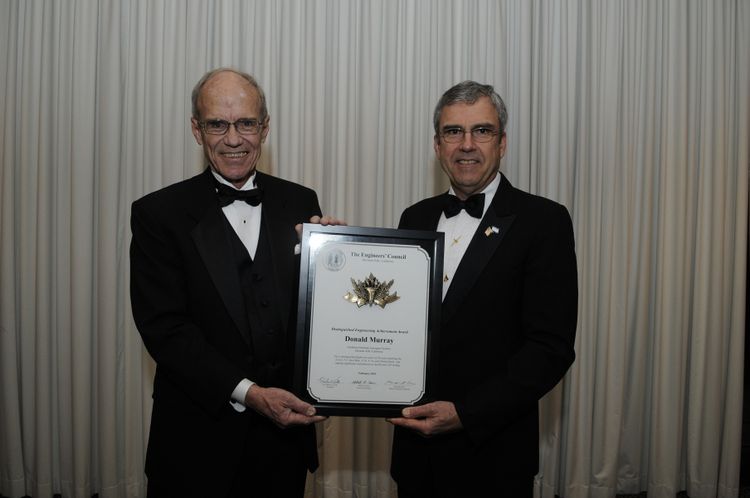
Murray was assigned to be a second shift supervisor for the Tacit Blue project, which grew out of an Air Force and Defense Advanced Research Projects Agency (DARPA) initiative known as the Battlefield Surveillance Aircraft-Experimental (BSAX) program. That program was aimed at producing a technology demonstrator aircraft that combined the battlefield survivability aspects of a low-observable stealth aircraft with a low probability of intercept (LPI) radar and data-link suite. This type of radar uses a variety of techniques to collect high-fidelity intelligence without compromising its own position. In other words, it is very hard for the enemy to detect its emissions and thus the presence of the platform it is mounted on.
In Tacit Blue’s case, the giant Hughes radar it was built around was designed to provide ground-moving target indicator (GMTI) capabilities, where formations of vehicles can be tracked with great precision over a wide area. It could also provide synthetic aperture radar mapping, which provides satellite picture-like images of the battlefield. None of the intel it gathered would be processed onboard. Instead, an LPI datalink would send it to a remote station on the ground for processing and rapid exploitation. The secret program existed in parallel to the larger PAVE MOVER/ASSAULT BREAKER initiatives underway at the time that were aimed at using a radar system like Tacit Blue’s to rapidly detect and counter Soviet armor advances in any weather.
While prior spy aircraft, like the SR-71, were able to collect brief ‘snapshots’ of intel while flying quickly in and out of target areas, the Tacit Blue project was aimed at producing a stealthy aircraft that could loiter deep inside or very near denied airspace and deliver a near real-time intelligence feed using its advanced sensors over long periods of time. This shift from momentary to persistent airborne intelligence-gathering over enemy territory was a revolutionary idea at the time, one that is still being expanded upon operationally today.

When giving an overview of the general specifications of the Tacit Blue demonstrator, designated AP-1, Murray said that the aircraft incorporated a Clark Y airfoil, a wing profile that features a flat bottom. This profile has a high lift-to-drag ratio and was used throughout the 1920s and 1930s on aircraft, but was rarely found on more modern aircraft. Northrop chose to use this older airfoil profile because the flat bottom offered a reduced radar cross-section and could offer the levels of lift needed for a high endurance aircraft such as the Tacit Blue. Remember, the idea is that Tacit Blue could penetrate and persist for long periods of time over or very near enemy territory, sucking up extremely high-quality intelligence without the enemy even knowing it was there.
When he joined the program, the basic airframe had been completed and assembled. Murray explained that the wings and fuselage of the demonstrator were constructed out of a standard aluminum alloy, while the radar-sensitive empennage and leading edges of the wings and fuselage/chines being built from a “proprietary Northrop composite material” that was key to the aircraft’s stealthiness. The front landing gear was from an F-5, while the main landing gear was from an F-16.
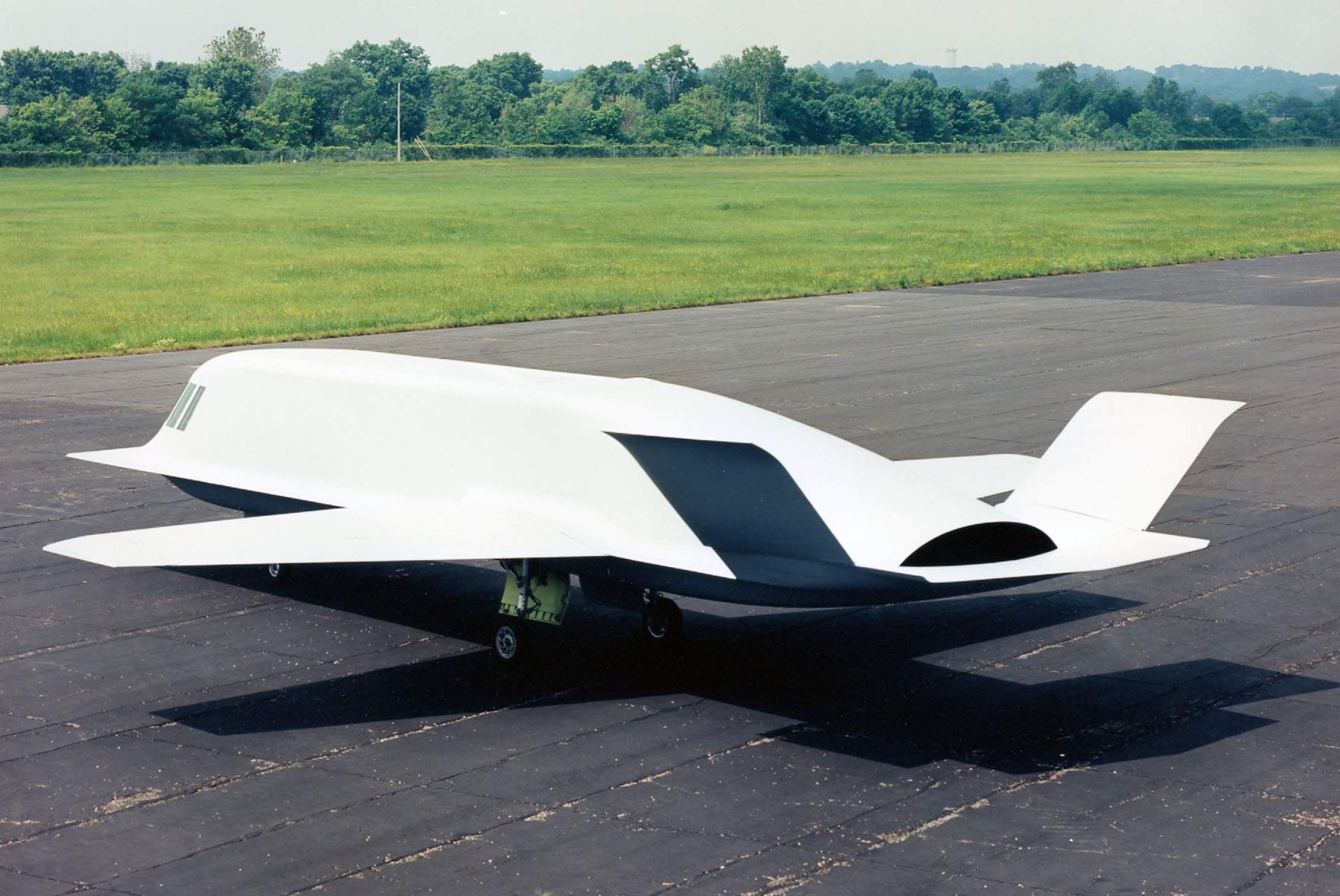
The program encountered few problems during pre-flight development, but Murray explained how the team had difficulty “attaining the smoothness and curvature on the fuselage to satisfy low observable requirements.” To remedy this, Northrop engineers turned to Bondo, a plastic-based auto body filler commonly found in auto parts stores. “We had a joke that if we ever lost our jobs we could always get a job with the car customizers in the L.A. area sanding Bondo because everybody got a chance to apply and sand Bondo,” Murray said with a laugh. Twenty years earlier, he says, Northrop had used Bondo on the X-21 demonstrator built to test drag reduction concepts.
Murray and his team were initially tasked with installing the jet’s subsystems and components, including its hydraulic and fuel lines, throttle system, and wiring up the Tacit Blue’s instrumentation and advanced flight control systems. Between 1981 and early 1982, Murray’s team performed in-hangar checks in order to verify the flight control systems and backup procedures that would be performed in the event of malfunctions. Murray describes the development and testing as being like a “typical ‘Skunk Works operation,” employing an “abbreviated approval structure” that allowed engineers to rapidly make and integrate changes as they completed the Tacit Blue demonstrator.
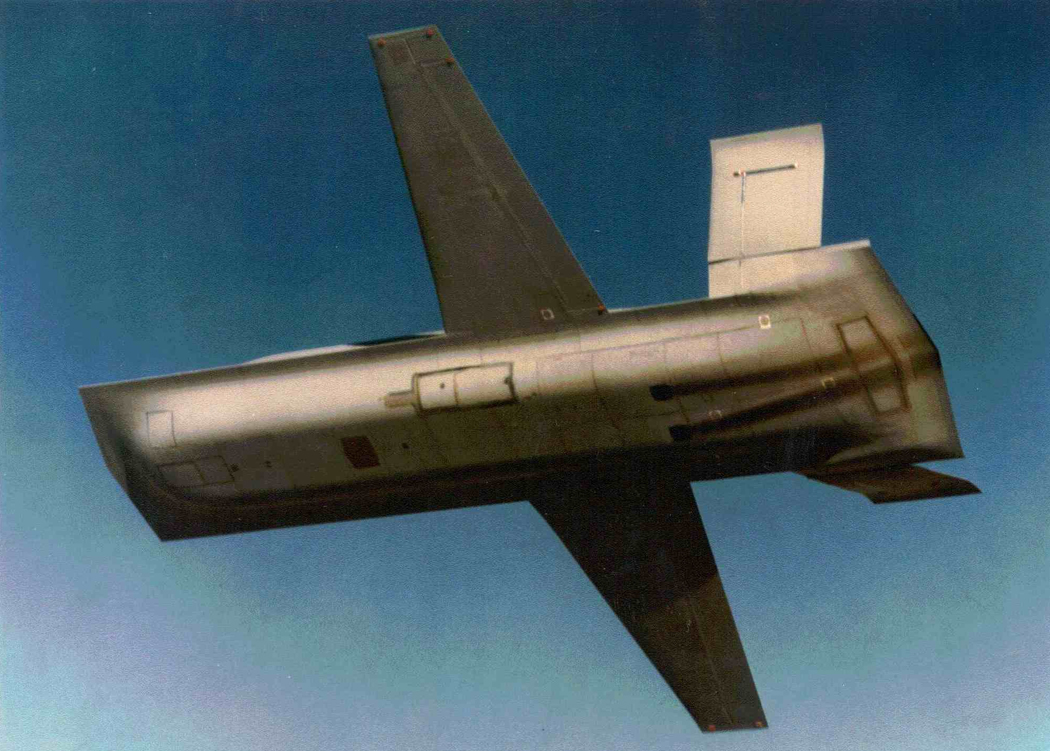
The program worked under strict sight sensitivity controls, meaning the AP-1 demonstrator had to be hidden from view when not performing tests that required it to be moved outdoors at Area 51. “The program was highly classified,” Murray said. “The vehicle was sight-sensitive. At the time, a lot of us didn’t know the objectives of the program. We were just there to make sure we had a safe flight test program and obtain quality flight test data.”
To protect the aircraft from being seen, Murray said that most of the ground testing was performed inside a hangar. “We even did low- and high-power engine runs inside the hangar. We towed out for certain low-observable information acquisition, and of course, we were outside for the low- and high-speed taxi tests,” he explained.
During these ground tests, the team discovered that it was impossible to start the AP-1’s Garrett ATF3 engines without starting them both at the same time. Because both turbofan jet engines shared a common intake without a splitter and were mounted side-by-side, any attempt to start the engines one at a time would fail due to the first engine “hogging up all the air,” Murray said.
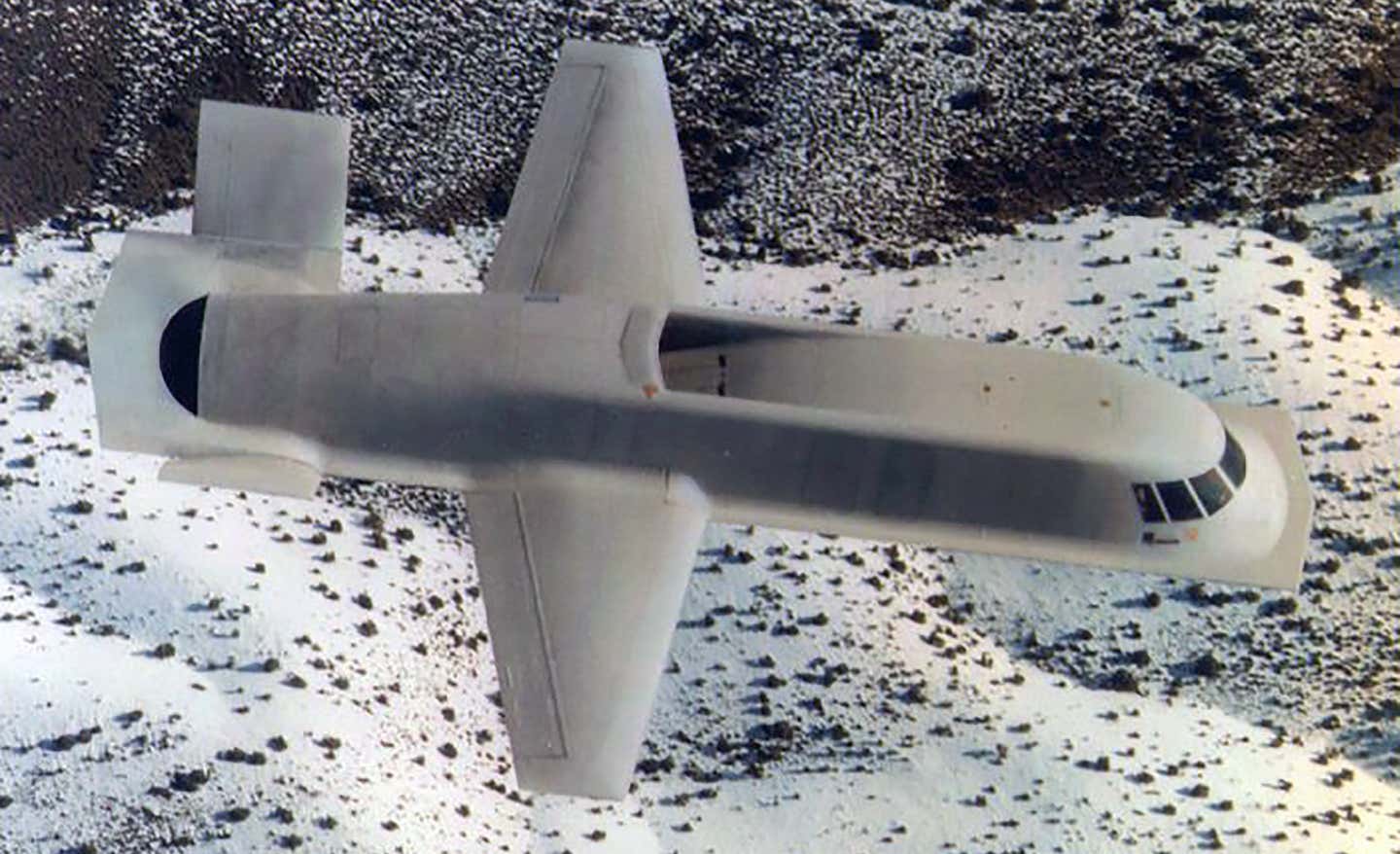
To remedy this, Murray’s team developed what they called the “Almost Simultaneous Start, with the appropriate acronym,” according to the veteran engineer. “We’d get the first engine cranking, and before it lit off, we’d crank the second engine. So they more or less lit off and spooled up to idle speed at the same time.” Murray said the electrical demands of these “Almost Simultaneous Starts” would cause every light on base to dim, alerting the entire facility that engine tests were being performed.
Murray added that Tacit Blue’s engines also “leaked oil like a large radial piston engine,” an engine configuration used widely in propeller-powered aircraft throughout the early-to-mid 20th century. “I didn’t remember how bad that was in my previous life dealing with R-2800s, but this thing reminded me a lot of an R-2800 and its oil leaking problems.” The engine he was referring to, the Pratt & Whitney R-2800 Double Wasp engine, was used in Northrop aircraft like the XP-56 Black Bullet, P-61 Black Widow, and RF-61C Reporter, among many other aircraft made by various manufacturers.

Once these ground tests were completed, the Tacit Blue flight test program began. Missions were conducted at Area 51 from February 1982 until June 1985 and consisted of over 140 sorties totaling 250 hours. During these tests, the team was impressed by the handling and reliability of the AP-1 demonstrator, which is intended only to test the stealth and LPI radar concepts Northrop was tasked with demonstrating.
Murray said the main reason Tacit Blue was able to achieve stable flight and reliable handling was that it was designed with a “quad-redundant” fly-by-wire flight control system in order to make up for the aircraft’s unconventional aerodynamics. “It doesn’t take a PhD in aeronautical engineering to realize that this sort of edge treatment on the nose and the huge side area forward of the [center of gravity] for the LPI radar dish does terrible things to the flying qualities of a normal airplane, hence the quad-redundant flight control system,” the engineer explained.
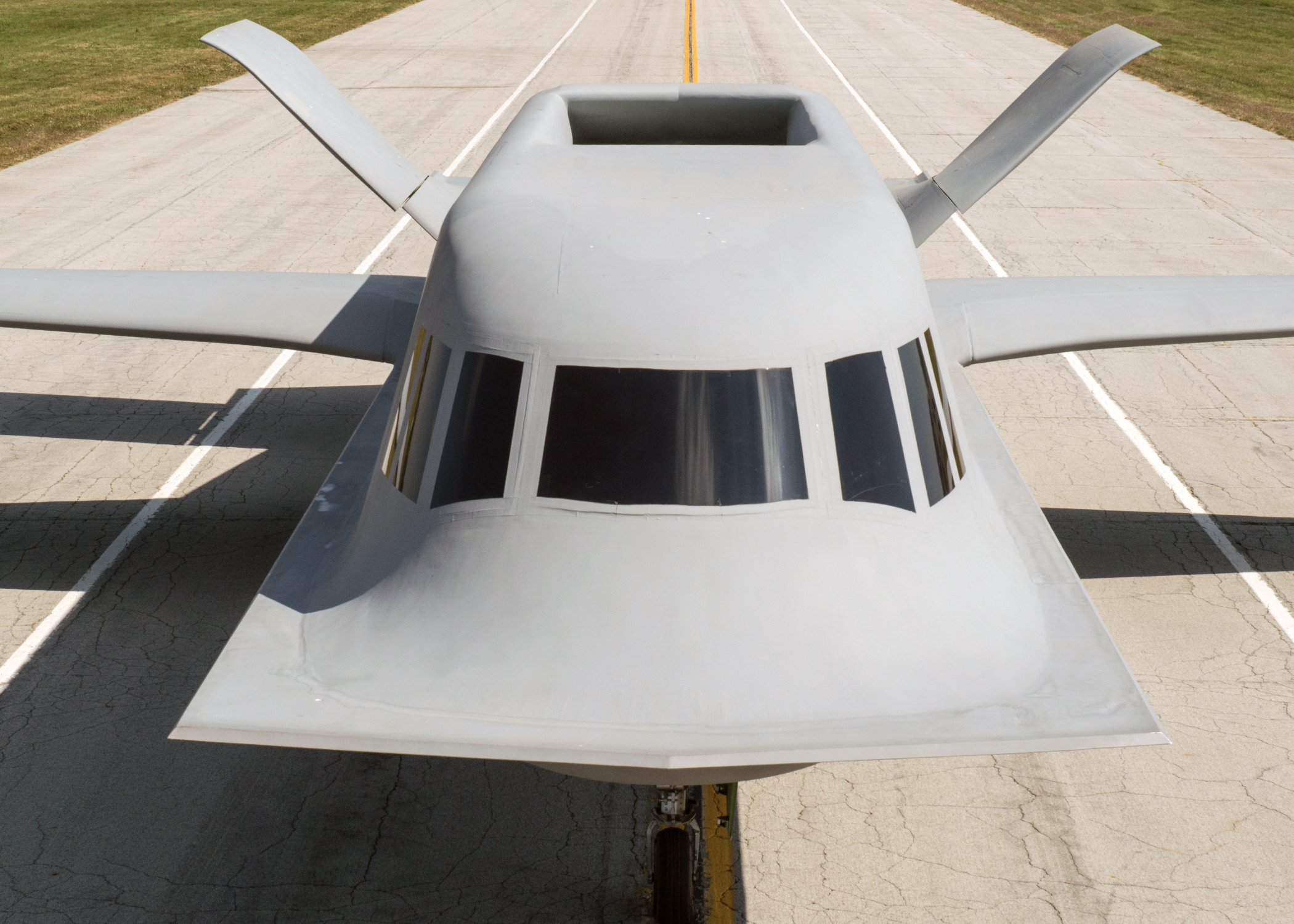
This means the aircraft had four separate computers that could analyze a pilot’s control inputs, air data from various sources, and the aircraft’s static disposition, and then calculate how to best adjust the jet’s control surfaces in response. This is in contrast to manual flight controls, in which a pilot’s inputs directly activate the mechanical systems that adjust an aircraft’s control surfaces.
“To summarize,” Murray said, “the airplane weighed 30,000 pounds at takeoff, the ultimate load factor was around three Gs, so it was not, on purpose, a very highly maneuverable airplane.” The F-16, for comparison, can pull more than nine Gs.
Murray described being tasked with “acting as pilot” while his team fine-tuned the flight control laws on the airplane on the ground. “They had a flight simulator hooked into the airplane outside and I would sit in the cockpit and ‘fly the airplane’ if you will. With all four flight control computers working properly, the airplane flew just like any other airplane. No problems.”
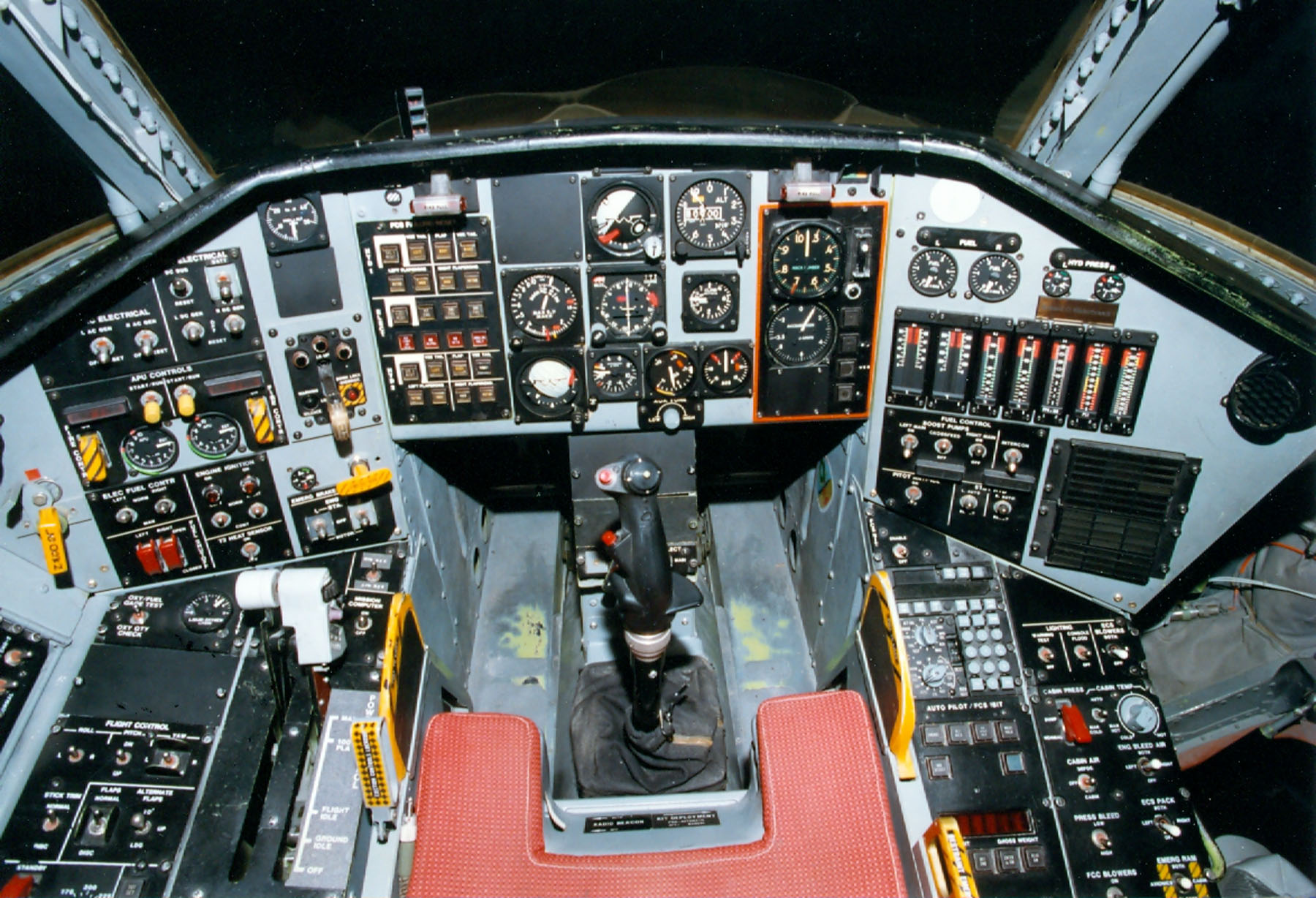
Murray said the AP-1 demonstrator performed admirably and rated highly on the Cooper-Harper rating scale, a system used by test pilots and flight test engineers to evaluate and categorize the handling qualities of aircraft. The scale ranges from 1 to 10, with best handling characteristics at 1 and worst at 10.
The Cooper-Harper rating was probably one or two. Very pleasant to fly, actually. But then the flight control engineers would start deactivating certain portions of the computers. With three computers operating we were getting down near the midpoint on the Cooper-Harper scale, four or five, it was very difficult to maintain straight and level flight. When they got down to two computers, it was almost impossible to maintain heading or pitch attitude. With just one computer operating the airplane was totally unflyable, which is something you would expect with a large amount of side area forward of the [center of gravity] due to the LPI installation and with the edge configuration on the nose of the airplane.

Aside from its flight characteristics, the Tacit Blue demonstrator also drew plenty of teasing for its unconventional looks, earning the nicknames ‘The Whale’ and ‘The Alien School Bus.’ In a separate interview, one of the program’s test pilots, Denny Jarvi, recalled that his first thought upon seeing the prototype jet was “Wow, haha, this is not the prettiest machine.” According to USAF Lt. Col. Norman “Ken” Dyson, who also flew the Tacit Blue, some of the test pilots would joke that “they forgot to take it out of the box!”
Murray echoed this while still defending the aircraft, adding that “beauty is in the eye of the beholder, and this airplane wasn’t beautiful, but every aspect of it performed admirably during this program.”
The Tacit Blue program was also noteworthy for its secrecy. Even though it was flown well over 100 times in broad daylight, the aircraft remained completely in the dark until it was declassified. The jet was finally revealed to the public by the Air Force in April 1996, 11 years after being placed in storage, presumably at Area 51.
Don Murray ended his talk at the Western Museum of Flight by stating that while his team was paid “very well” for their work, the project was grueling. “It was a 24/7 operation and we worked very long hours… I’d just as soon not to go to that test site again.”
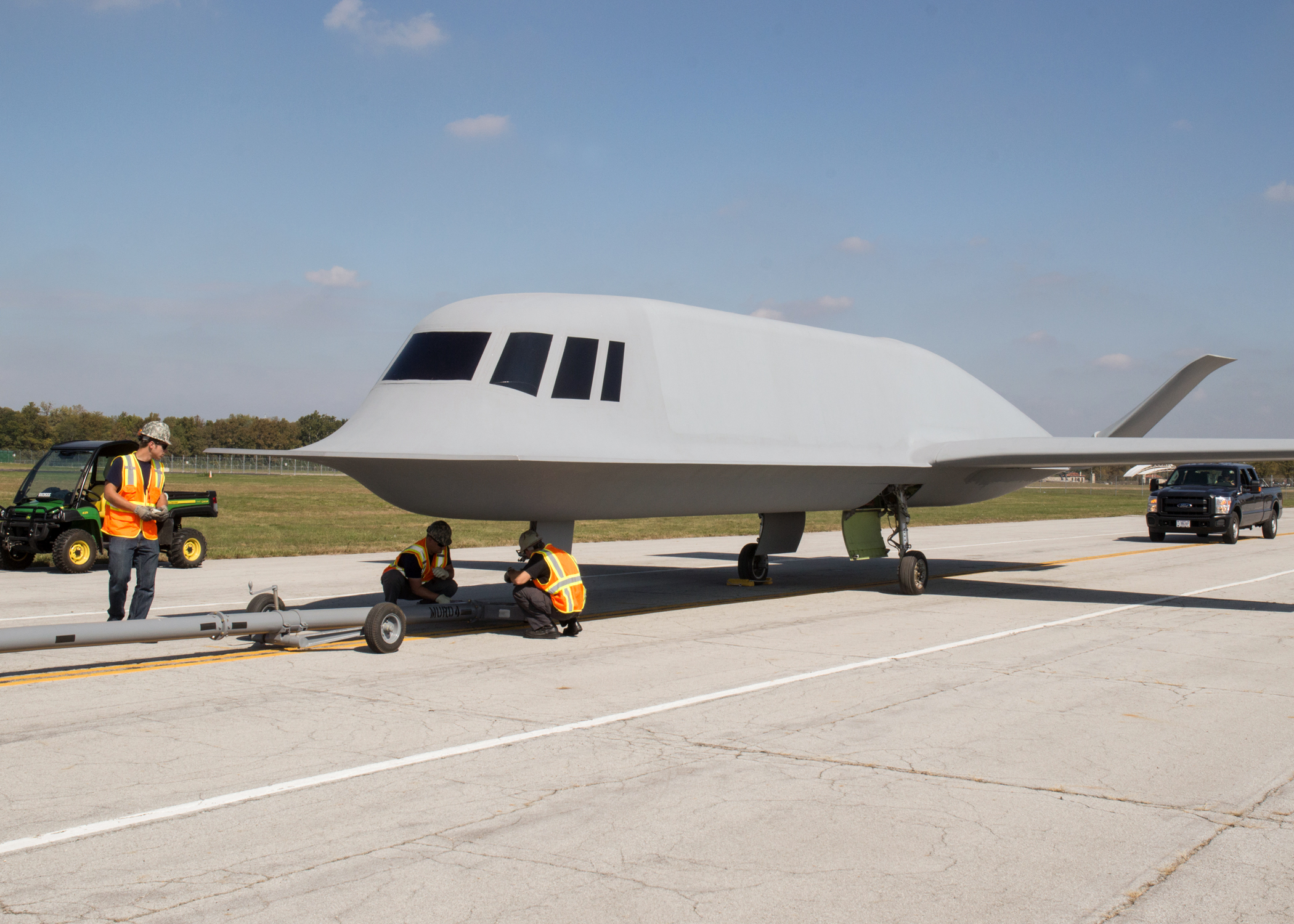
Despite a hugely successful flight test program that resulted in zero accidents, the Tacit Blue program did not lead to a production aircraft, although it was proposed. In fact, a follow-on program for some sort of stealthy, persistent, deep-penetrating, manned reconnaissance platform, before the arrival of advanced unmanned systems decades later, remains one of the most notorious ‘missing links’ in modern military aviation history.
Now-retired Lt. Gen. George K. Muellner, who served as principal deputy assistant secretary of the Air Force for Acquisition, stated at the Tacit Blue’s unveiling that the program “turned into a test-bed because its low-observable technologies proved to be more valuable than its [mission] contribution.” While this may have been true to some degree, at least for a handful of years, it was not the case by the time the B-2 arrived on the scene and the F-117 was declassified just four years after Tacit Blue stopped flying.
Still, there were concerns that an operational version of the Whale would be limited to nighttime missions due to its visual signature. For this specific role of tracking large armored columns and Soviet troop movements, it was also an issue that an operational but still secret Tacit Blue offspring’s intel would have been so good that anyone who saw it would wonder where it came from and the asset’s existence would have been realized fairly quickly. In other words, it was too effective to regularly use and integrate into standard operations while maintaining any modicum of secrecy.

It’s also worth noting that other sensors were potentially going to be trialed on Tacit Blue as a possible expansion of the program, most notably an electronic intelligence suite that likely would have likely been a whole other game-changer. Optical surveillance systems, which are also passive and emit no detectable radiation, could have also been leveraged by the design but were never tested.
In the end, for the baseline GMTI-SAR mission, a very non-stealthy, less expensive, longer-endurance, unclassified aircraft that could carry a full staff on board and an even larger radar with enough standoff range to be effective based on the threats at the time was seen as good enough for the mission. That aircraft ended up becoming the E-8 Joint Surveillance Target Attack Radar System (JSTARS).
Still, the stealth concepts developed for the Tacit Blue program, which gave the jet a radar cross-section “below that of a bat,” according to Muellner, as well as its greatly reduced infrared signature, went on to be used in the B-2 Spirt, YF-23, and influenced a wide range of other stealthy platforms and cruise missiles, including new designs, to this very day. Its LPI radar technology would also quickly become commonplace on stealthy aircraft, with B-2 taking advantage of it. Today LPI radar and datalinks are absolutely essential elements of American airpower and are deployed on stealthy and non-stealthy types.
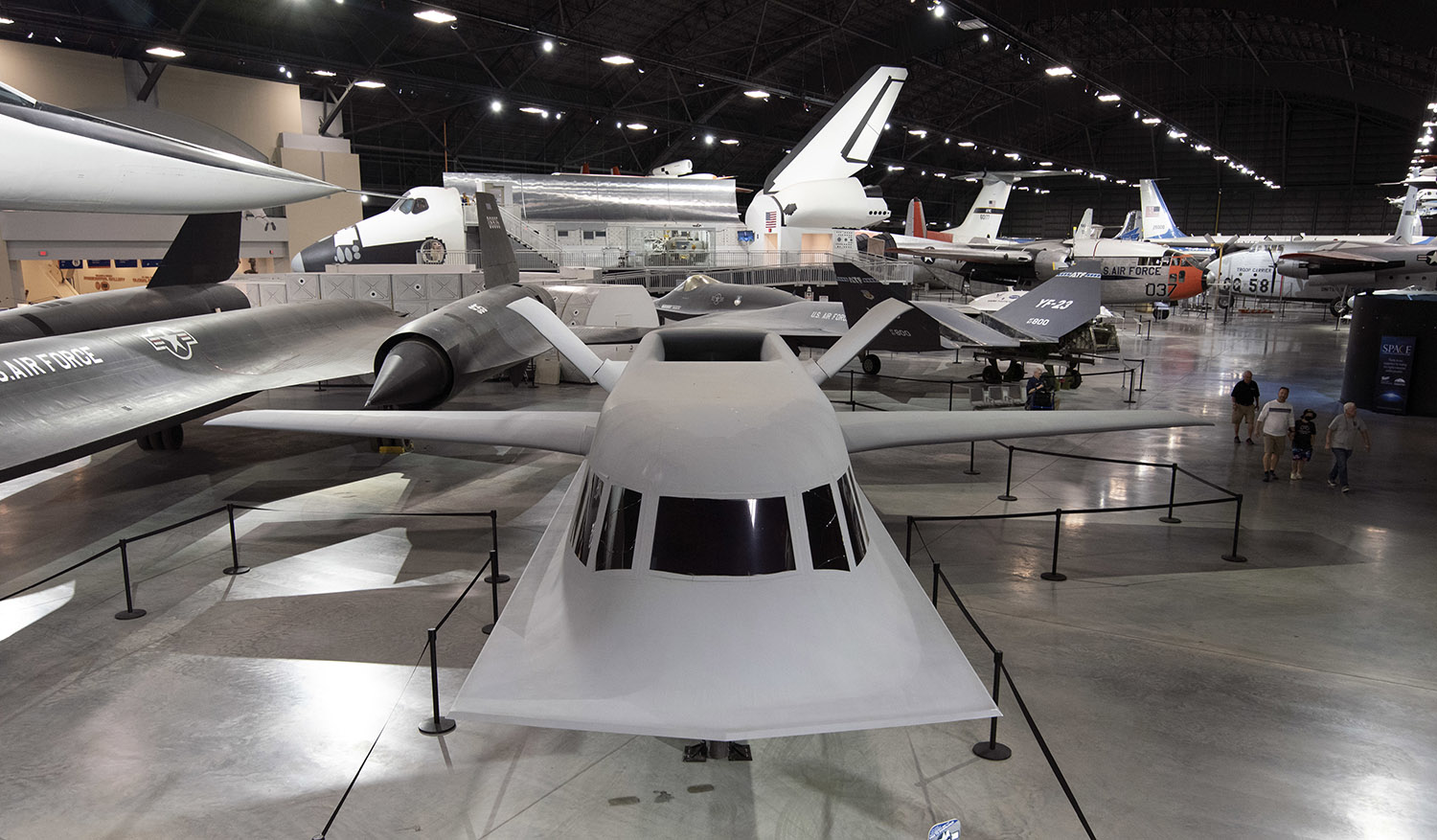
In fact, JSTARS is now being retired, with an ecosystem of platforms, with stealthy penetrating ones at its core, will take its place. An airliner or bizjet conversion simply does not have the survivability or the sensor range to be effective in many peer-state combat scenarios today. If anything, this reality is a tribute to just how ahead of its time Tacit Blue truly was.
Ultimately, Tacit Blue remains one of the most ambitious and influential aircraft development programs in history, proving that even a ‘Whale’ sporting a giant radar can take to the skies and remain there undetected.
Today, the Tacit Blue demonstrator can be seen on display at the National Museum of the United States Air Force at Wright-Patterson Air Force Base.
Contact the author: Brett@TheDrive.com and Tyler@TheDrive.com
